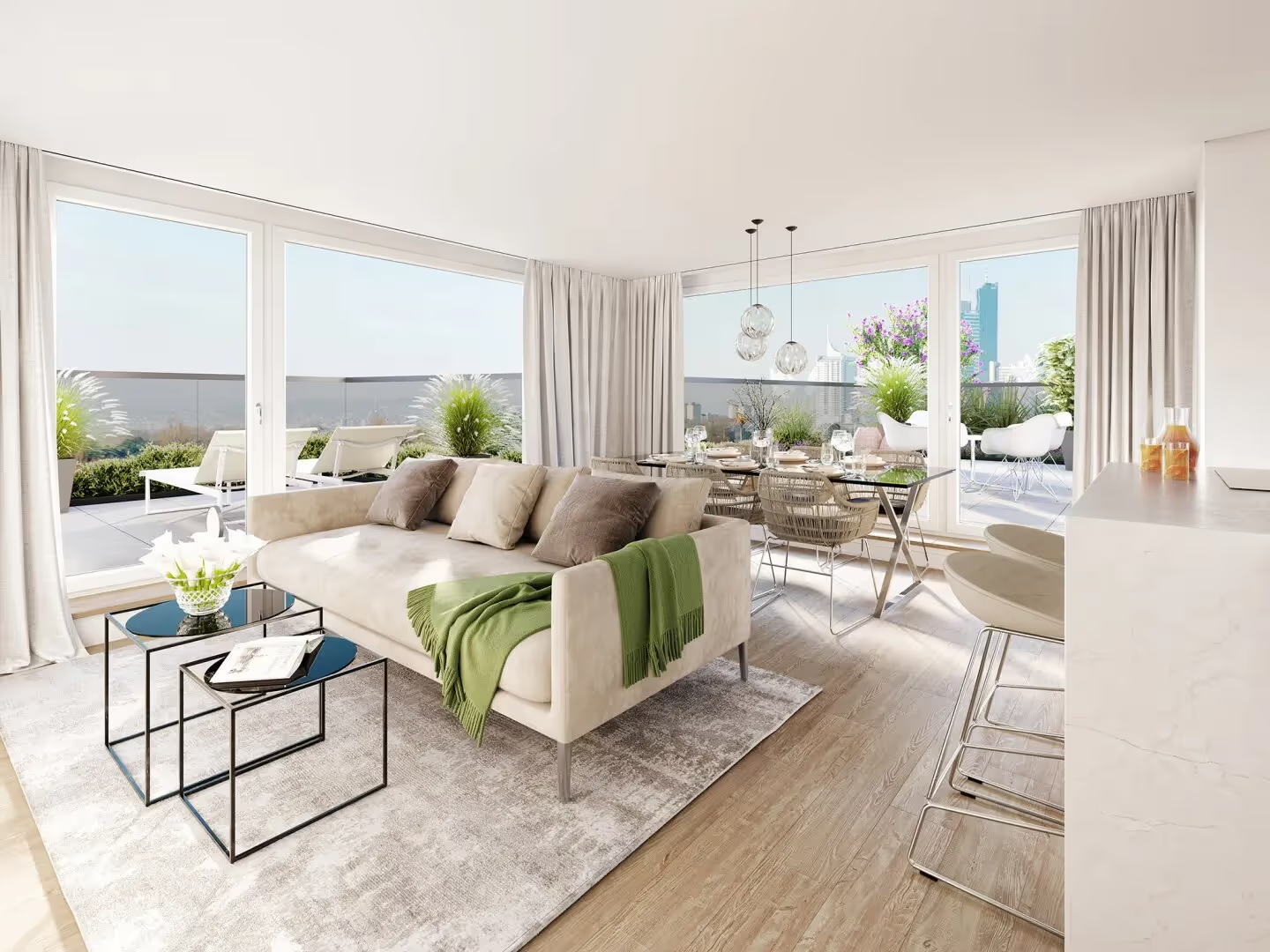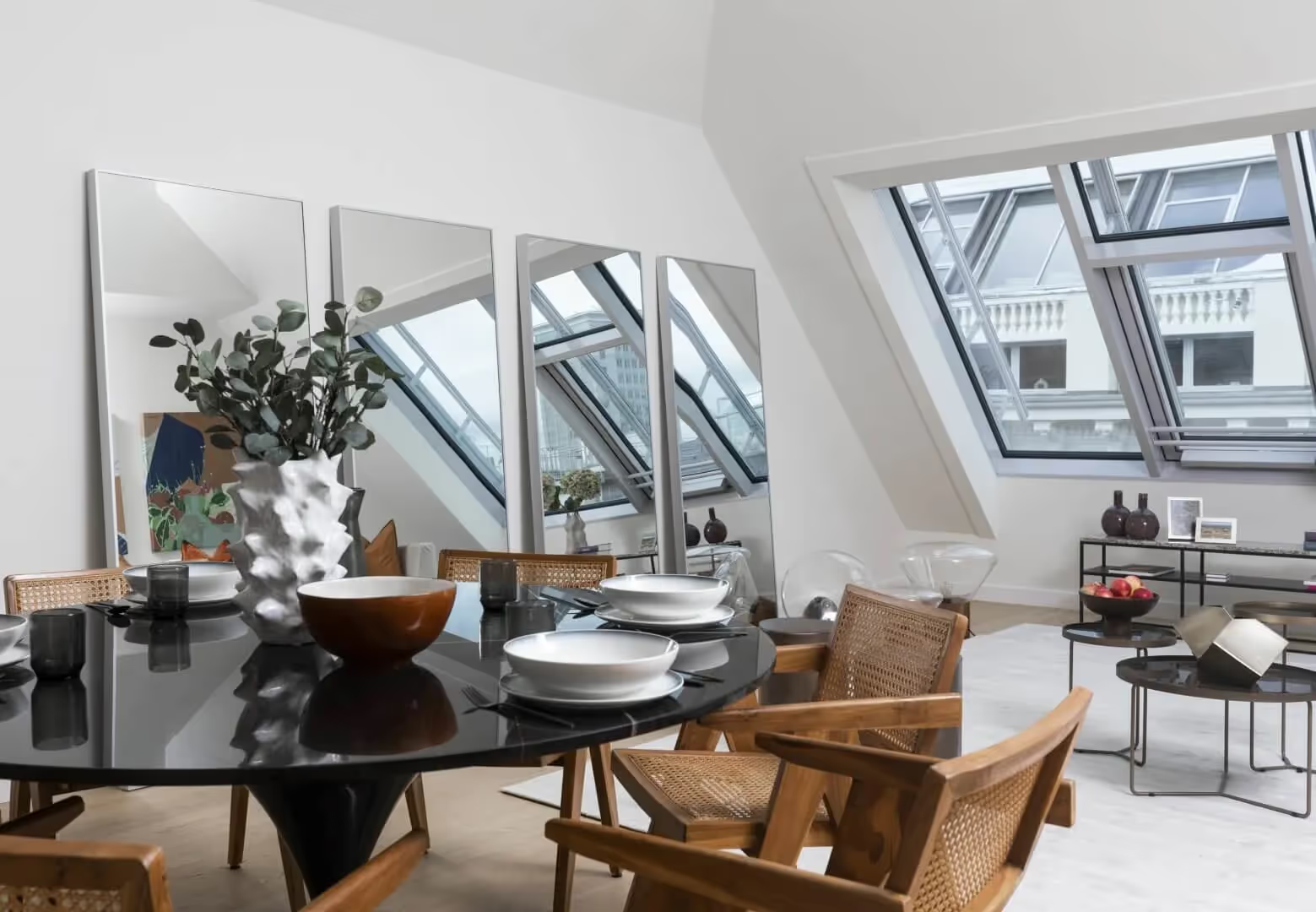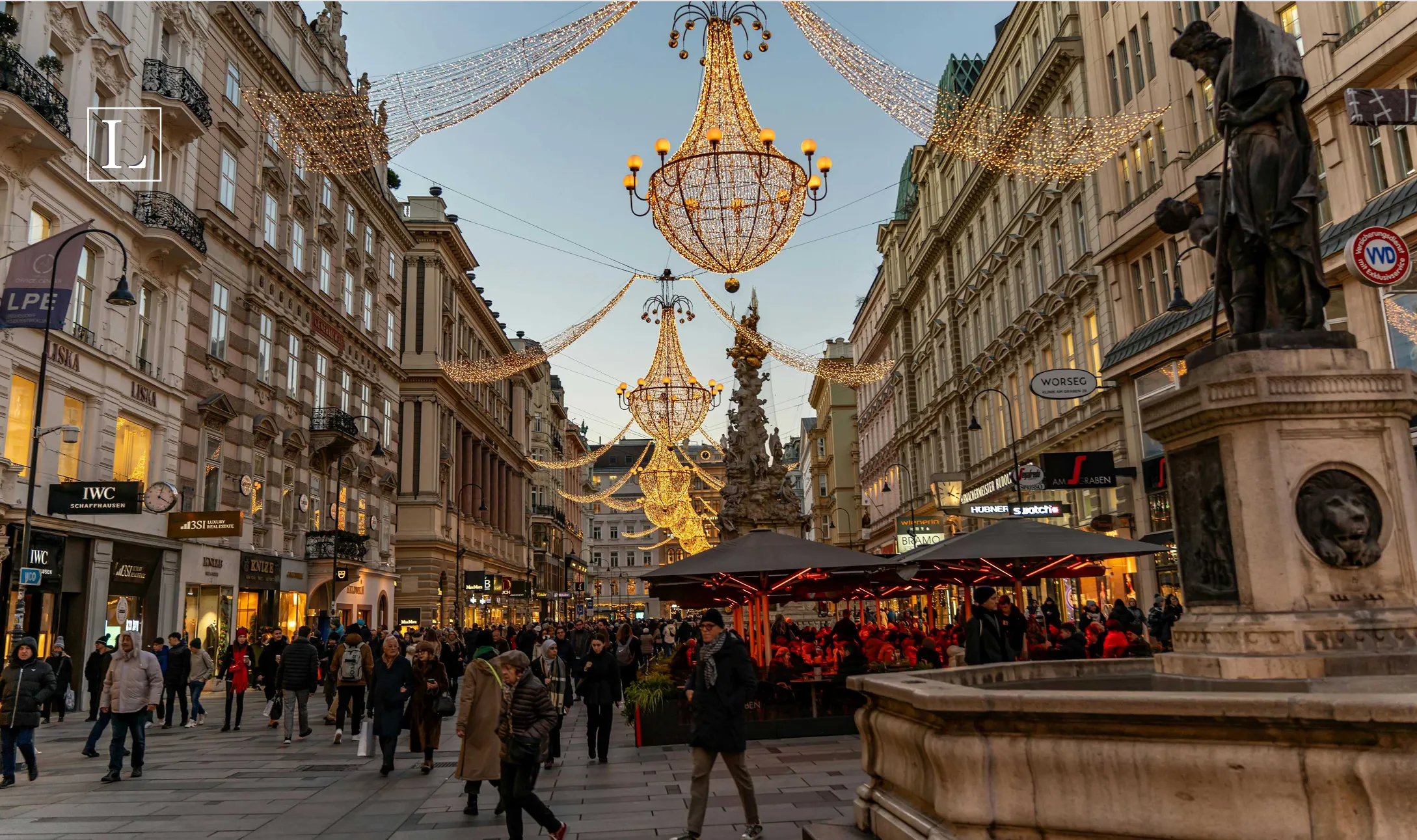The cost of real estate in Austria in 2023 and the forecast for 2024
The Austrian real estate market has been on an upward trajectory, marked by growing demand. Property prices are influenced by various factors such as location, type and whether it’s a primary or secondary unit. As we review the cost of real estate in Austria in 2023 and look ahead to the forecast for 2024, it's clear that these trends continue to play a big role in the choices investors and homeowners make.

Purchasing real estate
The post-COVID real estate market in 2023 and 2024 is more dynamic, showcasing shifts towards properties that blend convenient locations with eco-friendly features. This change highlights the importance of strategic choices between primary and secondary properties to meet modern demands for accessibility and sustainability.

Primary market
In the evolving Austrian real estate market, primary transactions are becoming the preferred strategy for those looking to purchase a unit in growing districts. In Vienna for example, these are the 10th, 21st, 22nd and 23rd districts. As we look back at 2023 and peer into 2024, it's clear that developers are keenly eyeing these areas for new projects, capitalising on their growth potential and the opportunity to cater to an audience looking for both residential comfort and investment prospects.
Primary properties in Vienna’s growing districts are becoming hotspots for development due to several key factors. Unlike the densely built central districts, these areas offer more space, allowing for larger, more ambitious projects. In general, the cost of real estate in these districts is more attractive than in the city centre, providing a great entry point for investors and homebuyers alike. For instance, the starting price per square metre in the central part of the city is EUR 14.000, while the 10th district starts at EUR 5.000 per square metre and the 21st, 22nd and 23rd districts all start at EUR 6.000.
As construction expands, there's a noticeable improvement in infrastructure, from transportation to amenities, enhancing the quality of life for the residents in the area. Off-market properties in these districts have already risen in price as the neighbourhoods continue to develop, making them a wise investment for the future.
In 2024, people are prioritising environmentally friendly living options, including properties with solar panels and other green features. Developers are responding by using eco-friendly materials in their projects, and making primary real estate that adheres to the latest eco-standards that are highly preferred by buyers.
In Austria's federal states beyond Vienna, the primary real estate sector is witnessing a similar trend, with developing districts attracting a high level of interest from buyers and investors alike. This shift towards investing in emerging areas is driven by a combination of factors including affordability, the promise of future development and the desire to get ahead of mainstream market demand.

Secondary market
In 2023, with an optimistic 2024 economic outlook, the secondary market showed resilience, as steady demand and prices reflected balanced market conditions.
The secondary market in Austria highlights the urban-rural divide in real estate preferences. Urban areas, particularly Vienna, Salzburg and Graz, remain popular due to their proximity to amenities, job opportunities and cultural options. However, there's a noticeable trend of buyers considering properties in rural areas or smaller towns, driven by the desire for more space and a quieter life. This has led to a more dynamic market, with varying price trends and demand levels across different regions. For example, prices in the central part of Salzburg start at EUR 9.900 per square metre, while outside of the city it is EUR 5.900 per square metre.
One of the defining tendencies of the secondary market in Austria over the past year was the shift in buyer preferences. A growing demand for properties that offer more space, access to green areas and an improved quality of life has been noted. Residences located in suburban areas or those close to parks and natural reserves are particularly sought after, as people look for homes that can serve as a personal retreat.
As we move into 2024, the secondary real estate market in Austria is expected to continue adjusting to these trends. Buyers and sellers who stay informed about these tendencies and are willing to adapt will find themselves well-positioned in a market that remains vibrant and full of opportunities.
.webp)
Renting property
The tendencies for renting properties in 2023 and 2024 reflect a dynamic market reshaped by the aftermath of the COVID-19 pandemic, with an evident continuous rise in rental prices. This trend is underscored by the significant increase in rent over the past two decades, where, as of 2022, tenants were paying over 70% more per square metre than in 2006. Despite a slight price dip in 2021 due to adjustments in survey methods, rents surged by 5.4% in 2022. Rental costs grew again in the past year, and are expected to continue rising in 2024, driven by factors such as an increasing population and consistently high real estate prices.
There is still a difference between renting property in an old or new building. In the central neighbourhoods of Vienna, prices start at EUR 21 per sq. m for older homes and EUR 24.5 per sq. m for new ones. In districts further outside the centre, the starting prices average EUR 15 per sq. m for old buildings and EUR 19 per sq. m for newer ones. This disparity highlights the evolving preferences among renters, who increasingly value not only location but also the sustainability features offered by new projects.
Rental prices differ in other federal states as well: the most expensive area is Tirol at EUR 22 per sq. m, while most others average around EUR 14 per sq. m.
Adjustments in Richtwertmieten (standard rent) were made on 1 April, 2023 that resulted in an 8.6% increase for about 750.000 Austrian tenants, further exemplifying the pressures on the rental market. Considering the high demand for residential properties and the rising costs of raw materials exacerbating the price of construction, landlords, especially those purchasing new properties to rent out, are expected to pass these increases on to their tenants. This ongoing shift underscores the complexity and challenges within the Austrian rental market in 2023 and 2024, as renters navigate an increasingly expensive landscape.
As we analyse the results and forecasts for the real estate market in Austria for 2024, a nuanced understanding emerges, especially when considering the decision to rent or buy property. The dynamics of the market have been influenced by a series of factors, including economic trends, population growth and changing housing preferences post COVID-19.

Forecast for 2024
The Austrian real estate market has experienced steady growth in recent years. This trend is anticipated to continue into 2024, fueled by a strong demand for housing, a limited supply in popular areas and the overall economic stability of the country. Rental costs have experienced a significant rise, a trend expected to continue through 2024, driven by escalating living expenses and strong demand for rental units, especially in cities.
Renting vs. Buying in 2024
The decision to rent or buy in Austria in 2024 hinges on several key considerations. Buying property typically requires long-term financial commitment and stability, but it offers the advantage of owning property and the potential appreciation in value.
With rental prices expected to continue rising, the cost of renting over the long term may increasingly outweigh the costs associated with buying, particularly when considering the potential for property value appreciation.
The current average mortgage interest rates of 4% per year make buying more appealing. Securing a mortgage at these rates could lead to significant savings over time compared to paying escalating rental prices.
Given the expected continuation of rising rental prices in the Austrian real estate market into 2024, purchasing property might be a more favourable option for those with the financial capacity and desire for a long-term investment.
Share your contact details, and we will happily assist you in finding your dream property







-p-2000.webp)
.avif)
%20(2).avif)





